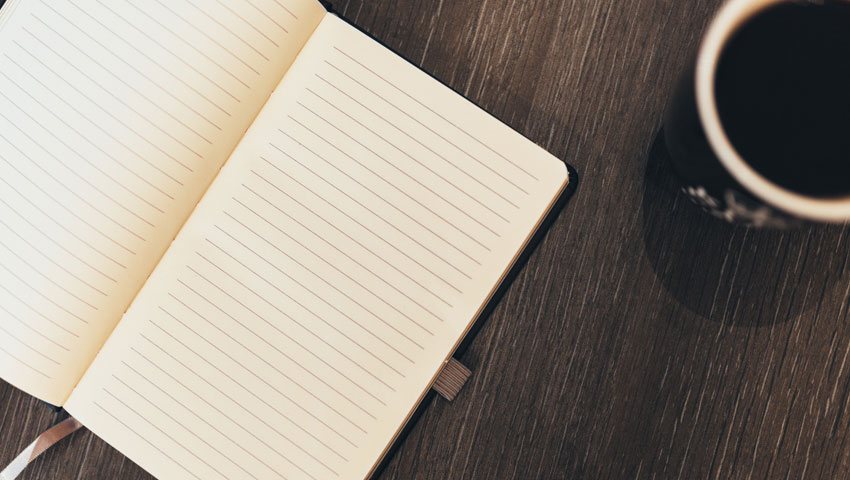Podcast: Play in new window | Download
Even after writing so many words over so many years, I can still freeze up when I look at a blank screen (or page).
I usually attribute this to any number of reasons (or excuses). Sometimes, frankly, I just don’t feel like writing.
It’s a problem most writers face at one time or another.
Having interviewed 30 writers over the past six months on my podcast, I’ve learned a lot about how they overcome distractions and mental blocks and get down to work each day.
One question I like to ask all my guests is about their writing process: how they get started and enter a state of “flow”; how much writing they get done in a given session or day; and what strategies, tips, and “productivity hacks” they’ve learned along the way.
Here are 9 tips these writers have shared with me about how they start writing — even when they aren’t in the mood to write, and even when they’ve got a dozen other things that are vying for their attention (like spending an hour to talk with me on a podcast):
1. The power of “morning pages”
Most of the writers I spoke with do the bulk of their writing in the morning when they’re at their peak of energy. Nothing terribly surprising about this pattern, right?
But what if, instead of jumping in and starting to crank out words to meet your daily quota, you instead start writing stream of consciously, just to get your mental gears going?
Oliver Burkeman, a popular columnist for The Guardian and author of “The Antidote: Happiness for People Who Can’t Stand Positive Thinking”, told me he does just that. Every day, before launching into his workday, he spends time writing up to a page and a half without stopping. It’s a technique he picked up from the author and writing coach Julia Cameron, which she calls “morning pages” (which she covers in extensive detail in her excellent book by the same name).
While morning pages may sound like just another form of personal journaling, there’s a very important difference: the words you write are not meant to be incorporated into the project you’re currently working on, and they aren’t applied toward your daily word count.
2. Schedule writing time on your calendar
Joanna Penn is a former (unhappy) management consultant who ditched the nine-to-five to pursue her dream of becoming a full-time novelist. Today, she’s a New York Times bestselling author who publishes several novels and non-fiction how-to writing guides each year.
Joanna is a rigorous scheduler and marks the days on her calendar that she’ll be writing fiction under her pen name, JF Penn; days she plans to write non-fiction material like blog posts and book chapters under her real name; and days on which she’ll be doing all of the myriad marketing tasks that she needs to handle as an “authorpreneur”.
3. Create a detailed outline
All of the non-fiction and most of the fiction writers I spoke with create detailed outlines before they start writing. Shane Snow, journalist, co-founder of Contently, and author of Smartcuts, breaks down his writing — whether it’s a 3,000-word magazine article or a complete book — into smaller, digestible pieces. He says that the psychological reward that a writer can get from tackling smaller pieces of a much larger project provides the incentive needed to keep moving forward.
4. Write in short timed sprints
In her recent book, “The 8-Minute Writing Habit”, novelist Monica Leonelle shows how you can substantially improve your ability to get your writing started each day and write more by focusing on much shorter 8-minute bursts of writing. She’s found that writers can produce several hundred words in those very short bursts of time.
Novelist and non-fiction author Chris Fox also recommends writing in short timed bursts, and even wrote an iPhone app to that helps you to time your sprints and calculate your writing output and productivity.
5. Take your writing with you
Sarah Wendell, author and editor of a widely-followed romance fiction blog, makes sure she’s ready to get the words down on the page (or screen) wherever she might be. She often experiences what she calls “word labor”, which she likens to the experience of having children. When words suddenly well up inside her mind and feel ready to burst forth, she stops whatever she’s doing, takes out her phone or notepad, and starts writing. She’ll even pull over to the side of the road if she’s driving at the time, just so she captures the words before she forgets them.
6. End your writing day by beginning the next day’s session
Danny Oppenheimer, a professor at UCLA’s Anderson School of Business and author of a widely cited study on the benefits of taking notes by hand, offered another useful nugget of writing advice to keep the cursor moving each day: at the end of each day’s writing session, start writing the first few sentences or paragraphs of the next day’s session.
This approach ensures he continues the train of thought that has developed during a given day’s writing session and provides a ready prompt for the next day’s writing. It also allows his subconscious to do some work while he’s sleeping or otherwise occupied, before starting the next chapter or section of his writing project.
7. Shut off social media
Many of the authors I spoke to are avid users of social media to build their audiences and interact with them (and market their books). But they also make a point of steering clear of social media when they need to get their writing done. Sarah Stodola, author of Process: The Writing Lives of Great Authors, shuts down internet access with an application called — appropriately — Freedom.
8. Find the right place
One element that many authors mentioned was critical to their productivity was environment. Shane Snow wrote the bulk of his book, Smartcuts, in a semi-secluded corner table at a Starbucks in Manhattan, down the street (and away from) his office. Joanna Penn also finds that she can concentrate better by writing at coffee shops (and away from her apartment).
9. Tune into background music (or white noise)
Several of the writers I spoke with listen to background music or white noise as they write. Mark Vanhoenacker, a 747 pilot for British Airways and author of “Skyfaring: A Journey with a Pilot”, listens to the music of Einaldo Guinadi.
Joanna Penn listens to rain and thunderstorm sounds. And Shane Snow finds that listening to the same song several times helps him to concentrate. While he was writing Smartcuts, his friend one day sent him a screenshot from Spotify that showed he had just listened to the same song 160 times!
***
I’ve been fortunate that so many writers have opened the doors to their private writing studios and shared their strategies, tips, and personal productivity “hacks” for getting their writing done.
I hope you’ve found some of these tips helpful and can use them to get more writing done.
(Even when you don’t feel like it).
What strategies or “hacks” do you use to start writing (even when you don’t feel like it)? Please share them in the comments.


As great as always, this tips have a ton of value for all writers 😉
Like Sarah Wendell, I find that my writer’s mind is active when I am away from my laptop too. While gardening, upon waking, driving to work, on a Florida day trip, etc., ideas and solutions to plot issues compete for my attention. I have even rigged a notepad and pen in my bike frame to allow me to jot a thought as I pedal.
Back at home, I take these notes and sort them into whichever project folder they relate to for future use. If I am letting a project rest for a few days/weeks, I may use that time to grab all the notes and type them up then toss the scraps. Reviewing the handwritten notes or the resulting electronic files provides some refreshing creative time and can bring more insights/ideas. When i am ready to work on a specific project it is always great to find these notes to get me back into the process.
Thanks for your comment, Liz! Great idea for taking your writing on the road.